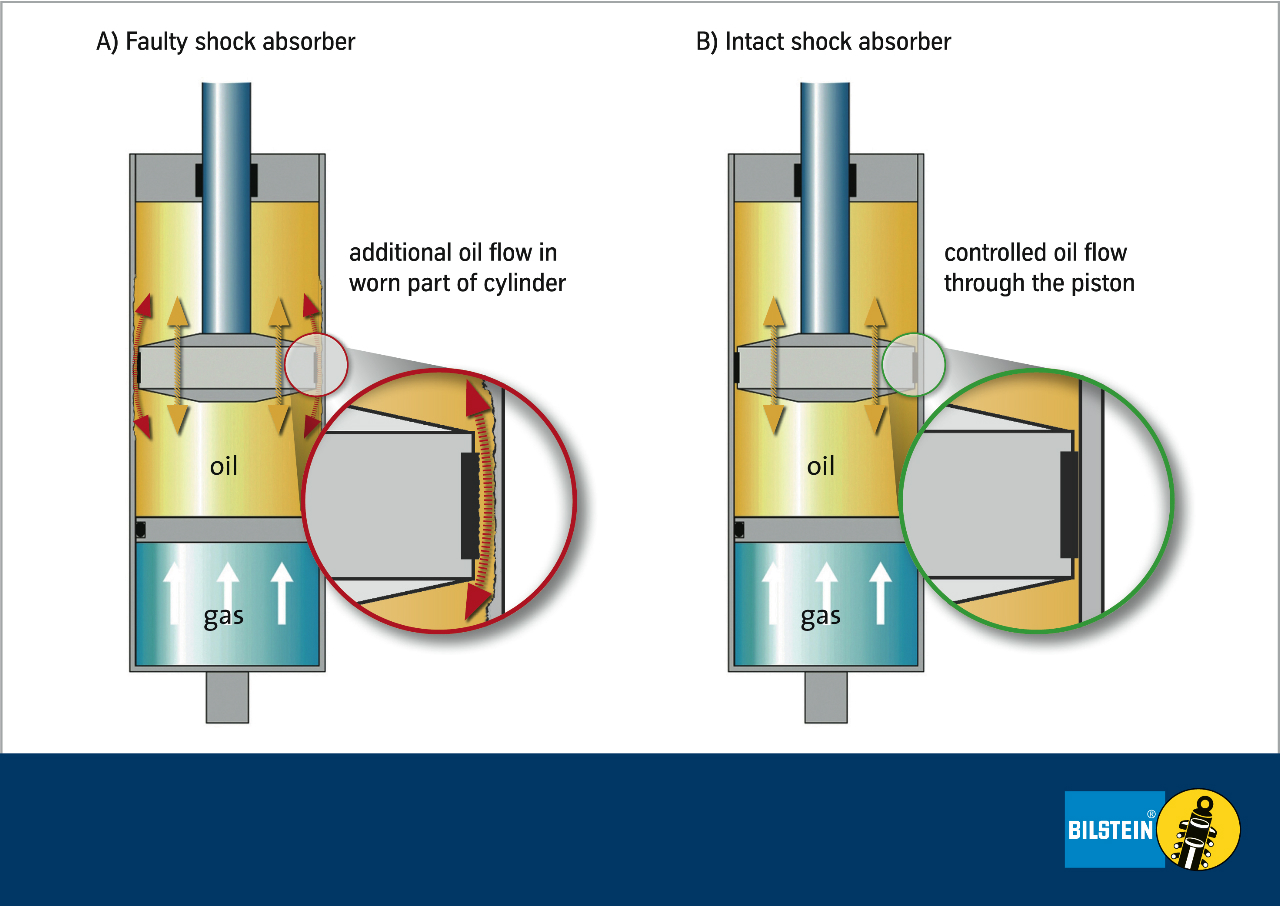Bilstein recommends shock absorber check every 20,000 km
 Suspension specialist Bilstein recommends that shock absorbers be checked regularly and replaced when necessary in an auto workshop
Suspension specialist Bilstein recommends that shock absorbers be checked regularly and replaced when necessary in an auto workshop
In Germany, as elsewhere in Europe, the average age of cars on the road is increasing. The TÜV Report 2014 shows that one car in seven has defective suspension. According to Dekra, 20 per cent of all technical defects which lead to an accident are still attributable to the suspension. For this reason, suspension specialist Bilstein recommends that shock absorbers be checked regularly and replaced when necessary in an auto workshop. To restore 100 per cent driving safety, shocks and springs should always be replaced in pairs on each axle.
Closer inspection of the shock absorbers can reveal a lot to the trained eye, especially when changing from winter to summer tyres in the springtime, but it’s still checks of the brakes, battery, oil level, fan belt, exhaust, wheels and wiper blades that dominate the seasonal check-up in the auto workshop. “Drivers should ensure that a suspension check is a fixed component of the springtime check-up while their car is in the workshop anyway,” proposes Rainer Popiol, head of training at Bilstein in Ennepetal. “Servicing companies are similarly obliged to notify customers about defective shock absorbers”.
Shock absorbers, after all, are one of the suspension components that are subjected to particularly hard wear and tear. Their service life depends on many factors. Bad roads, frequent heavy loads, high mileage and a sporty driving style, cold, heat, dust, water and salt cause shocks to wear faster.
The consequences for driving safety are severe. Due to the poor grip of the tyres, there is an increased risk of skidding, especially when driving on twisty roads or taking evasive action. Braking distances are also extended by roughly 20 per cent, according to the experts. ABS and other electronic stability systems are also cancelled out. On top of all of this, the dreaded aquaplaning effect sets in much sooner. In addition to a visual inspection, front and rear axle tests on a vibration plate give conclusive information on the condition of the shock absorbers. Similarly, the suspension test also reveals the condition of other components, such as the springs, axle, brakes, steering and tyres.
Apart from the negative influences on driving safety, car owners are also faced with avoidable costs through the premature wear of tyres, tie rod ends and steering components. That is another reason why Bilstein recommends that safety relevant vehicle parts be checked at least every 20,000 kilometres.




Comments